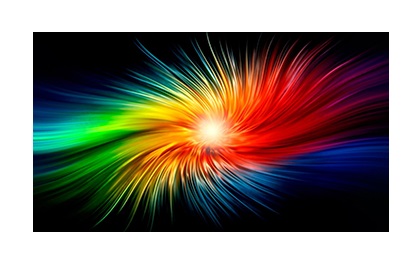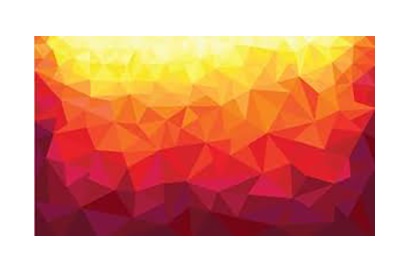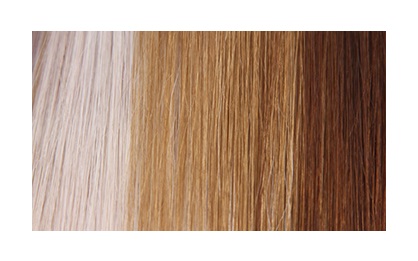Color is the sensation stimulated in the brain by wavelengths of
light; each wavelength stimulates the perception of a distinct color, which is
varied throughout the color spectrum. Color has a powerful impact in a home or
office. Individuals are drawn to certain colors for a variety of reasons. The
concepts of color psychology can also be applied in everyday life.
For example, maybe you're planning on re-painting your walls or
redecorating a house or room with a new color scheme. Well, you might want to
consider some of these suggestions about colors and how they might affect your
emotions and mood: Choosing works of art to suit your personality, space and
the feelings you want to invoke in a room can be achieved with some
understanding of the effect of color in art. This article explored the theory
of Emotions and some of the significance they hold to artists.
 Cool Colors
Cool Colors
Blue, green and purple
are known as cool colors which create a calm, harmonious feeling.
· BLUE: Invoking
compassion and wisdom, truth and loyalty. In a more negative tone, it can be
considered cold and uncaring, and is often associated with resignation and
solitude.
·
GREEN: A harmonious color, green encourages a calming, comfortable
attitude, filled with hope and healing. Associated with success, it can also
invoke a sense of greed or jealousy.
·
PURPLE: The traditional color of royalty, this color is
associated with wealth and respect. Used in holy days in the Catholic church,
it also signifies mystery and spirituality.
Warm Colors
 The psychology of color indicates that stimulating warm colors can
increase energy and appetites; irritability and anxiety can be heighted as
well.
The psychology of color indicates that stimulating warm colors can
increase energy and appetites; irritability and anxiety can be heighted as
well.
· RED: Associated with
romance and excitement, this color exudes power and ambition. However, it is
also known to increase the sensation of danger, rebellion and violence.
·
ORANGE: Often considered an extravagant color, orange is also seen
as an enthusiastic and joyful color. Believed to be a model for service and
warm, it can also correspond to aggression and domination.
·
YELLOW: Most often thought of as the color of happiness, this
traditionally cheerful color invokes friendship and imagination. However, one
must not forget the other side of the yellow coin?it is used to demonstrate
caution, danger, and even aging.
 Neutral Colors
Neutral Colors
· WHITE: Showcasing purity
and innocence, this color is universally considered for cleanliness. However,
it is also a stark color, displaying sterility.
·
GREY: The "king" of neutrality, this color represents
compromise, and gives a sense of peacefulness. It can, at times, be associated
with sadness or melancholy.
·
BROWN: The color of "nature", brown is associated with
comfort and warmth. However, as a somewhat "drab" color, it can also
set a somber tone.
·
BLACK: In a positive light, black can be sophisticated and
mysterious. However, it is considered in most western cultures as an example of
morbidity and death.
References:
arttherapyblog.com
sybariscollection.com